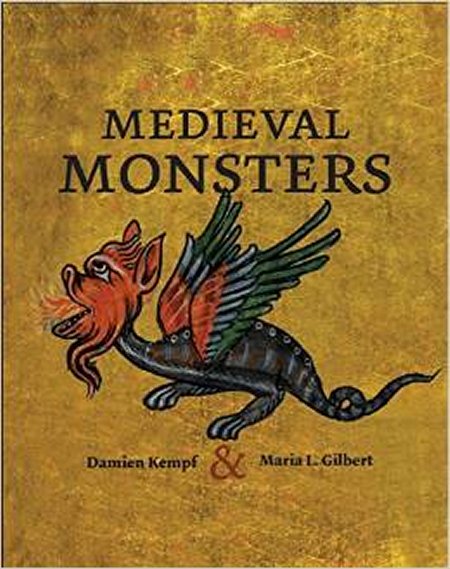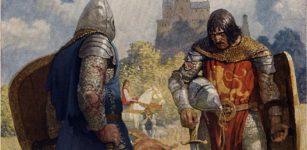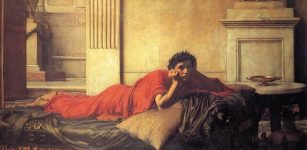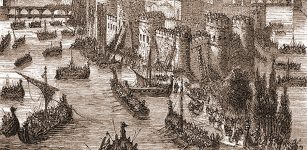Medieval Manuscript Reveals Surprising Discovery Of Star Wars Master Yoda & Shocking Monsters
MessageToEagle.com – Now, this is a surprise. What is Star Wars Master Yoda doing in an ancient medieval manuscript?
If you’re a Star War fan, then you are familiar with The Jedi Master Yoda, the best-known member of a Force-sensitivespecies whose true name is not recorded.
Known in some sources simply as Yoda’s species, this species of small carnivorous humanoids produced several well-known members of the Jedi Order during the time of the Galactic Republic.
In Star Wars, the name and homeworld of this species remains unknown. Members of the species were very small, most standing below 70 centimeters, but had extremely long lifespans lasting many hundreds of years (though because all known members of the species were Jedi, who are known to generally have longer lifespans than what is ordinary for a species, the exact average lifespan of the species is unknown).
Adult members of the species were characterized by sharp, elfin ears, ridges on their foreheads, tridactyl hands and (most commonly) anisodactyl feet. Their leathery skin and blood were both light green.
That is of course science fiction and scientists have never heard of a species like this one.
Still, this does not prevent anyone from imaging that there might be similar life-forms somewhere out there in the Universe.
It is a funny coincidence that a Yoda-like figure also appears in a 14th-century manuscript known as the Smithfield Decretals that are collections of papal letters that compiled decisions (decrees) on church law and doctrine.
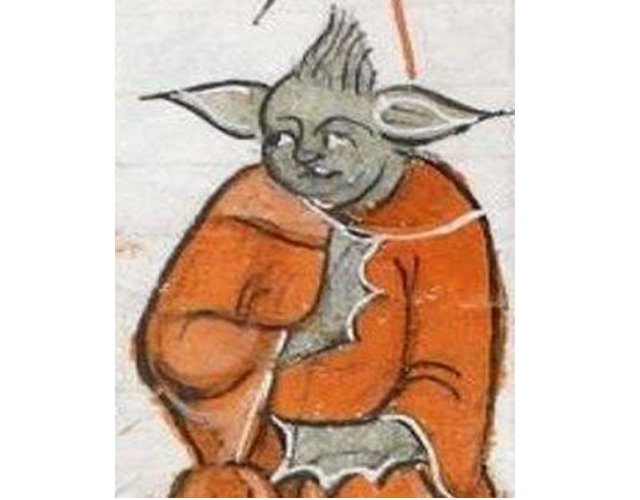
The image was brought to light by Julian Harrison, curator of pre-1600 historical manuscripts at the British Library.
He currently cares for the priceless collections that include copies of Beowulf, some of the world’s oldest Bibles, the Lindisfarne Gospels and the state papers of Henry VIII. He curates exhibitions such as the current Magna Carta: law, liberty, legacy.
Harrison has been working at the British Library since 2006. “I can’t think of how we could have communicated what we do back then apart from an occasional story in the media,” he says. The shift began in 2010 when the library started an experimental blog to chart the digitisation of the Greek manuscripts.
“It was a niche thing for a niche audience,” he adds.
This experimental project evolved into the British Library’s Medieval Manuscripts Blog, a lively and enlightening account of the curator’s life.
“We use it to promote what we do,” Harrison says. “One popular post explains why we don’t wear white gloves to handle manuscripts, but we also try to cater for a non-academic readership. Our most popular post is Knight v Snail that looks at why images of armed knights fighting snails are common in illuminated manuscripts.”
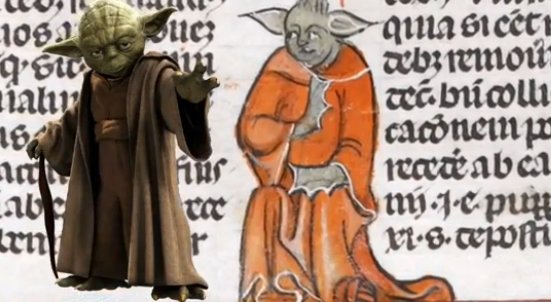
These pictures have proved very popular online. “People are often unaware of how beautiful the illuminated manuscripts are and how technically skilled they were in the medieval age,” he says. There are also images with a comic twist. Harrison’s posts include one entitled Lolcats of the Middle Ages. Another features a doodled figure, which looks curiously like Yoda from Star Wars.
“I’d love to say that it really was Yoda, or was drawn by a medieval time traveler,” Harrison says. “It’s actually an illustration to the biblical story of Samson – the artist clearly had a vivid imagination!”
Various kinds of monsters played a significant role in medieval times.
In their new picture book published by the British Library, Medieval Monsters, medieval historian Damien Kempf and art historian Maria L. Gilbert explore the fantastic, grotesque and exuberant world of monsters in the Middle Ages through the images found in illuminated manuscripts, from dragons and demons to Yoda and hybrid creatures.
The medieval world was teeming with monsters–on the edges of manuscript pages, on the fringes of maps, not to mention crowding in from all sides of the known world.
Believed to dwell in exotic, remote areas, these inexplicable parts of God’s creation aroused fear, curiosity, and wonder in equal measure. Powerfully captured in the illustrations that filled bestiaries, travel books, and even Bibles and devotional works, these misshapen brutes continue to delight audiences today with their vitality and humor.
Filled with satyrs, sea creatures, griffins, dragons, and devils, Medieval Monsters is a cornucopia of illustrations from medieval manuscripts that are at once fascinating, grotesque, and amusing. This successor to the British Library’s Medieval Cats and Medieval Dogs provides an accessible and informative guide to bewitching demons, blemmyae, Cyclops, and multi-headed beasts of all sorts. Over one hundred wondrous and terrifying images show how strange creatures sparked artists’ imaginations to incredible heights, while offering fascinating insights into the medieval mind. Read more
With medieval manuscripts one does find there lurks a particularly special kind of creature, lurking in the margin, religious instruction or pure diversion?
Frightening, charming, sometimes alarming; monsters are Sin and Damnation, Seduction, Temptation, Allure, Delectation. We enter their world, they hold us in thrall let’s take a look, the Middle Ages call.
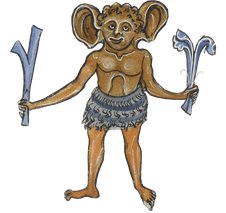
The big-eared Panotii were a monstrous race; located on the peripheries—an imaginary place. Their ears were so large they could serve as blankets or wings to fly away when overcome with shyness.
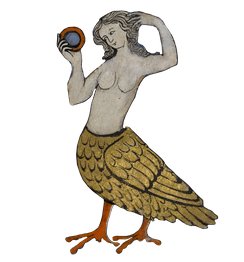
Bird-woman mermaid, alluring siren at sea, sings so enchantingly there’s no time to plea. You’re entranced, you’re drawn in. That voice! Those tail swishes! Next you’re asleep and then: food for the fishes.
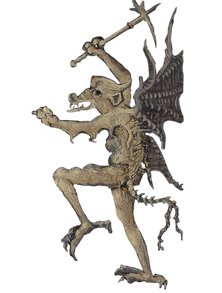
Living in the desert, the hermit saint Anthony besieged by hallucinations seemingly continually. Facing trial after trial of temptation, this Christian ascetic retained his concentration.
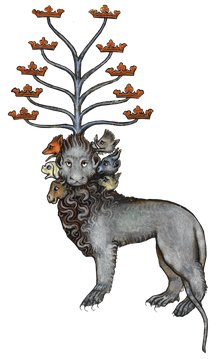
An end days vision: six heads and ten horns with multiple crowns, his head is adorned. Mouth like a lion and feet like a bear the Beast of the Apocalypse gives quite a scare.
In their book, Damien Kempf and art historian Maria L. Gilbert explore several other very unusual medieval monsters. The descriptions are intriguing to say the least.
Learn more about their book here
MessageToEagle.com.

